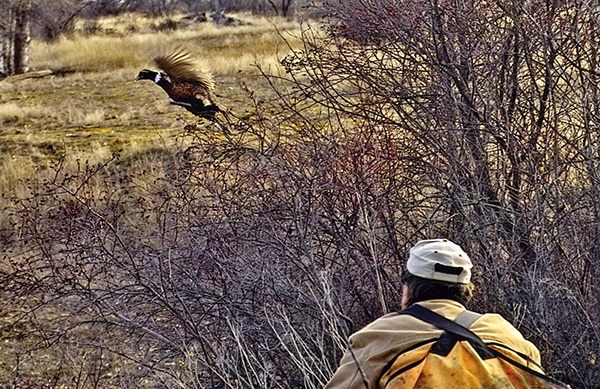Let me start by saying that if you do not have access to a bird dog, but you know someone who does, it is time to invite him or her hunting. For me, it is simply more enjoyable to have a companion, two or four legged, in the field but there will always be times when hunting alone is the only option. Montana offers such amazing habitat that sitting around and watching football on the weekends would be a tragic waste of public hunter’s time. Below are strategies to guide a hunter on the day he turns off the television and sets off to fill his game bag.
Shoot straight:
Alright so this one is obvious, but it still has to be said; without a dog, you are responsible to chase down cripples, a task easier said than done. Hunting alone is not the time to take impressive or long shots. Shoot one bird, mark it, and immediately retrieve it. It is critical to put a good mark on the bird and get to that spot as quickly as you can. Pheasants are tough birds and they will vanish if your shot is not dead accurate.
Hunt the seams:
The highest percentage areas for a solo hunter are usually along the seams that separate food from cover. The essential element to hunting the seams is setting up for the flush, and the follow-up.
Hunt into the wind:
The best way to get within range of pheasants is to minimize noise and hunt into the wind whenever possible. This creates easier shooting opportunities as the bird will most likely flush against the wind.
Concluding thought:
Montana has some of the best pheasant hunting in the country and a lot of it is accessible to the average hunter who is willing to grab a map and hit the road. Between all the private lands enrolled in Block Management, state Wildlife Management Areas, and BLM land there is no excuse not to get out this season, even if you do not have a dog.


